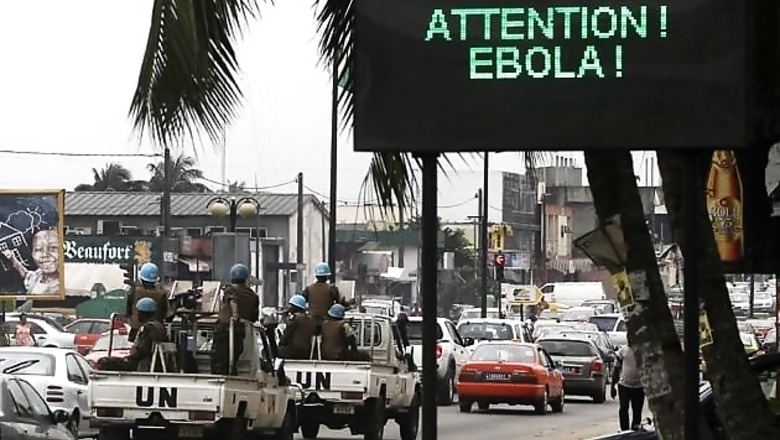
views
Geneva: At least 4,877 people have died in the world's worst recorded outbreak of Ebola, and at least 9,936 cases of the disease had been recorded as of October 19, the World Health Organization (WHO) said on Wednesday, but the true toll may be three times as much.
The WHO has said real numbers of cases are believed to be much higher than reported: by a factor of 1.5 in Guinea, 2 in Sierra Leone and 2.5 in Liberia, while the death rate is thought to be about 70 per cent of all cases. That would suggest a toll of almost 15,000.
Liberia has been worst hit, with 4,665 recorded cases and 2,705 deaths, followed by Sierra Leone with 3,706 cases and 1,259 deaths. Guinea, where the outbreak originated, has had 1,540 cases and 904 deaths.
On Friday the WHO put the toll about 300 lower with more than 745 fewer cases.
In the past week, transmission of the disease was most intense in the capital cities of Monrovia and Freetown, while Guinea's capital Conakry reported 18 confirmed cases, its second highest weekly total since the outbreak began.
Although Ebola has been contained in Nigeria and Senegal, the disease is spreading towards Ivory Coast in both Liberia and Guinea, including in Guinea's Kankan district on a major trade route with Mali. Kankan saw its first case in the past week.
However, the WHO said the Liberian district of Lofa had seen a third consecutive week of decline in the number of cases, which reports from observers suggested was a result of disease control measures.
Among the thousands of cases are 443 health care workers, 244 of whom have died. The WHO said it was undertaking extensive investigations to determine why so many had caught the disease.
"Early indications are that a substantial proportion of infections occurred outside the context of Ebola treatment and care," it said.
A UN plan to stop the epidemic, known as 70-70-60, involves isolating at least 70 per cent of cases and safely burying at least 70 per cent of those who die by December 1, a 60-day deadline from the start of the plan. That is supposed to rise to 100 per cent by the 90-day deadline on Jan. 1.
The number of isolation beds had increased substantially to 1,126 but remained only 25 per cent of the 4,388 expected to be needed in 50 Ebola treatment units. There were also firm commitments from foreign medical teams to staff only 30 units.
Without those beds in those units, families have to care for sick relatives at home and risk infection.
The WHO also estimates 28 laboratories are needed in the three worst-hit countries, with 12 now in place, and 20,000 staff will be needed to keep track of people who have had contact with Ebola patients and may be at risk.
The three worst-hit countries will also need 230 dead-body-management teams by Dec. 1, it said. They have 140.




















Comments
0 comment